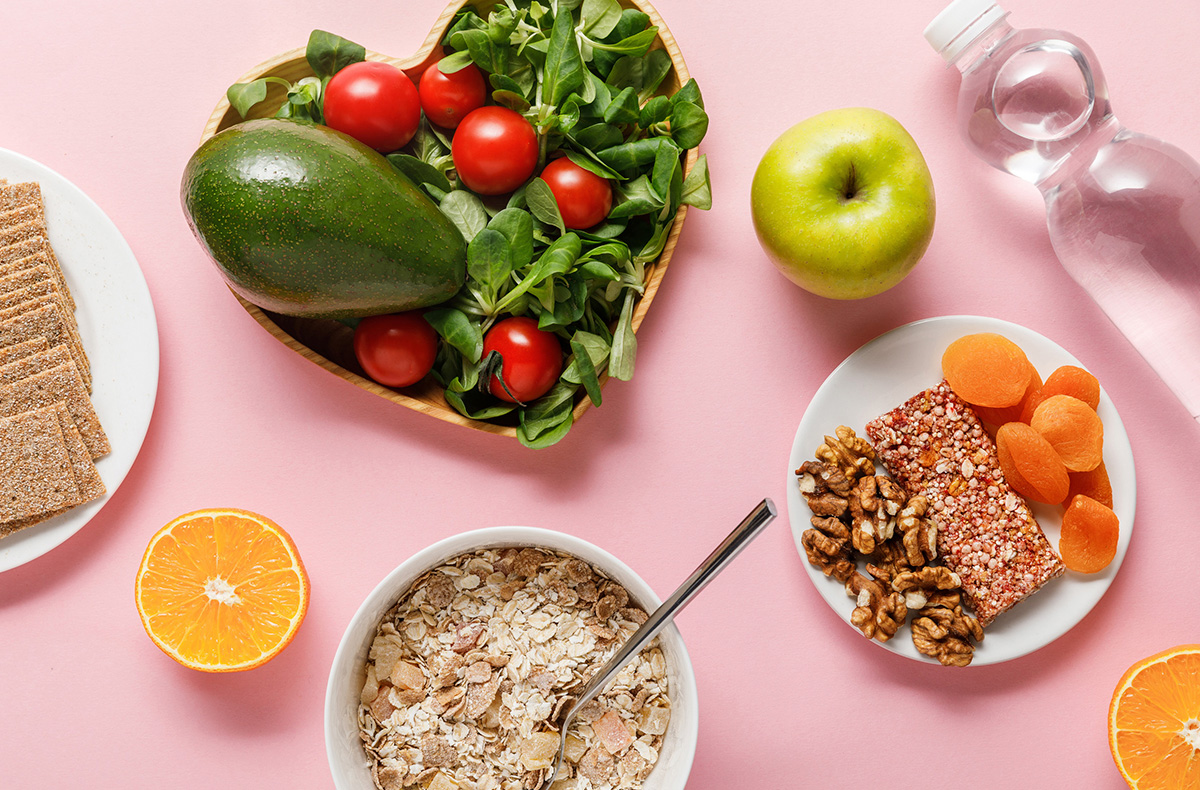One thing is clear and scientifically proven, and that is that the food we eat influences the type of gut microbiota we have. There is so much literature on this that it would be impossible to summarise it all in this article. This is not just the consequence of certain microorganisms in our microbiota having a preference for one type of food or another, developing more according to what we eat (prebiotic effect of the food). It is a much more complex mechanism in which certain foods can provoke different inflammatory reactions at intestinal level, certain germs favour or inhibit the development of others, or certain food components, especially additives, plant protection products and others, can be toxic for some micro-organisms more than for others. The use of pesticides, antibiotics and antifungals (specific antibiotics for fungi and yeasts) in food, both in feed given to livestock, poultry or farmed fish, and directly to farmed food intended for humans to prevent pests and improve its preservation, should be highlighted. Frequent consumption of these phytochemical-treated foods leads to a rapid and long-lasting alteration of the gut microbiota, which is almost the same as taking antibiotics by mouth continuously. Moreover, because we are so frequently exposed to these products, the micro-organisms in our gut develop microbial resistance by "natural selection", just as when we take a lot of antibiotics. These multi-resistant germs will have more pathogenic power and cause infections that are more difficult to treat. They will also negatively influence the vaginal and urogenital microbiota, because, as you know, everything is related. One example is the possible link between the consumption of meat from chickens or pigs treated with antibiotics and infectious cystitis. Some scientific papers have linked the presence of uropathogenic strains of the bacterium Escherichia coli in the meat of these animals with an increased risk of repeated urinary tract infections, although there is some controversy about this. It can be assumed that, in addition to acting locally, when we ingest certain of these or similar antibiotic substances, some of them will be absorbed by the gut, pass into our body, and be at least partly eliminated by the kidneys into the urine. It is therefore likely that this is another mechanism by which the urinary microbiota is altered when such products are present in our food. Hence the importance of consuming, as far as possible, organic foods that are (in theory) free of these toxins.
Bibliography:
Arponen S (2021). Es la microbiota, idiota. Alienta.
Maynard CL, Elson CO, Hatton RD, Weaver CT. Reciprocal interactions of the intestinal microbiota and immune system. Nature. 2012 Sep 13;489(7415):231-41.
Cryan JF, O’Riordan KJ, Cowan CSM, Sandhu KV, Bastiaanssen TFS, et al. The Microbiota-Gut-Brain Axis. Physiol Rev. 2019 Oct 1;99(4):1877-2013.
Takiishi T, Fenero CIM, Câmara NOS. Intestinal barrier and gut microbiota: Shaping our immune responses throughout life. Tissue Barriers. 2017 Oct 2;5(4)
Martin-Gallausiaux C, Marinelli L, Blottiere HH, Larraufie P, Lapaque N. Short Chain Fatty Acids – mechanisms and functional importance in the gut. Proceedings of the Nutrition Society, 2021, 80 (1), pp. 37-49.
Helander HF, Fändriks L. Surface area of the digestive tract – revisited. Scand J Gastroenterol. 2014 Jun;49(6):681-9.
Maynard CL, Elson CO, Hatton RD, Weaver CT. Reciprocal interactions of the intestinal microbiota and immune system. Nature. 2012 Sep 13;489(7415):231-41.
Cryan JF, O’Riordan KJ, Cowan CSM, Sandhu KV, Bastiaanssen TFS, et al. The Microbiota-Gut-Brain Axis. Physiol Rev. 2019 Oct 1;99(4):1877-2013.
Takiishi T, Fenero CIM, Câmara NOS. Intestinal barrier and gut microbiota: Shaping our immune responses throughout life. Tissue Barriers. 2017 Oct 2;5(4).
Mitchell NM, Johnson JR, Johnston B, Curtiss R 3rd, Mellata M. Zoonotic potential of Escherichia coli isolates from retail chicken meat products and eggs. Appl Environ Microbiol. 2015 Feb;81(3):1177-87.
Buberg ML, Mo SS, Sekse C, Sunde M, Wasteson Y, Witsø IL. Population structure and uropathogenic potential of extended-spectrum cephalosporin-resistant Escherichia coli from retail chicken meat. BMC Microbiol. 2021 Mar 29;21(1):94.
Magruder M, Sholi AN, Gong C, et al. Gut uropathogen abundance is a risk factor for development of bacteriuria and urinary tract infection. Nat Commun. 2019;10(1):5521.
Magruder M, Edusei E, Zhang L, et al. Gut commensal microbiota and decreased risk for Enterobacteriaceae bacteriuria and urinary tract infection. Gut Microbes. 2020;12(1):1805281.
Spaulding CN, Klein RD, Ruer S, et al. Selective depletion of uropathogenic E. coli from the gut by a FimH antagonist. Nature. 2017;546(7659):528-532.
Jones-Freeman B, Chonwerawong M, Marcelino VR, Deshpande AV, Forster SC, Starkey MR. The microbiome and host mucosal interactions in urinary tract diseases. Mucosal Immunol. 2021 Jul;14(4):779-792.
Mitchell NM, Johnson JR, Johnston B, Curtiss R 3rd, Mellata M. Zoonotic potential of Escherichia coli isolates from retail chicken meat products and eggs. Appl Environ Microbiol. 2015 Feb;81(3):1177-87.
Buberg ML, Mo SS, Sekse C, Sunde M, Wasteson Y, Witsø IL. Population structure and uropathogenic potential of extended-spectrum cephalosporin-resistant Escherichia coli from retail chicken meat. BMC Microbiol. 2021 Mar 29;21(1):94.

